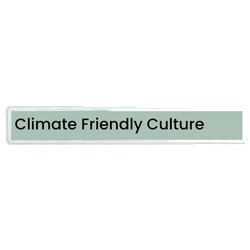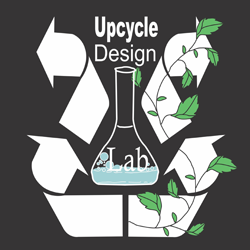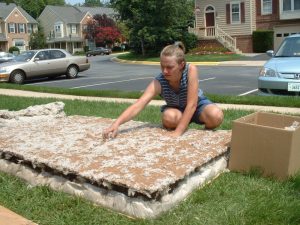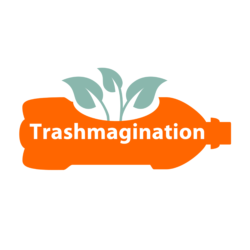Category: Recycling
Convert (waste) into reusable material.
The fact that almost anything can, in principle, be recycled does not necessarily mean that it should be. p106
Recycling has power as a metaphor… .it symbolises circularity, and the notion that we should not take, use and dispose of materials in linear sequence. This metaphorical value does not justify our emphasis on recycling as the primary strategy for dealing with the problem of waste. p107
Beyond Recycling by Paul Micklethwaite
In the waste hierarchy, upcycling is placed higher (on the desirability scale) than recycling.
 Upcycling
Upcycling
This is the optimal mode of recycling. Upcycling, in contrast to conventional downcycling, is any process by which materials are purified and improved in quality, prior to reuse in new product forms.
Examples include glass and aluminium which can be recycled without degrading the quality of the product.
This is a restorative form of material recycling. Take the example of a typical plastic water bottle, which contains residues from a catalytic reaction that produces a potential toxin. The material in these bottles can be purified as they return through an upcycling system that removes the substance of concern and improves the quality of the polyester. Additionally, whilst the process of recycling often shortens a material’s fibres, it is now possible to repair those fibres so that the material can be continually reused at the same level of quality. Rather than being an extended process of successive degradation to the point of unusability, plastics recycling now has the potential to become a process of restoration to as good as, or perhaps even better than, new (Makower, 2013).
The term ‘upcycling’ is more widely used to describe taking something of low quality and making it into something with more perceived value. See Creative Reuse
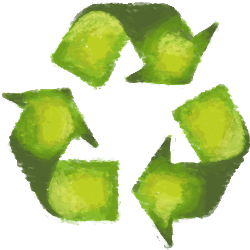 Recycling
Recycling
Recyclable materials include many kinds of glass, paper, cardboard, metal, plastic, tires, textiles, batteries, and electronics. Composting is also a form of recycling
In ideal implementations, recycling a material produces a fresh supply of the same material—for example, used office paper would be converted into new office paper, and used polystyrene foam into new polystyrene (value stays the same).
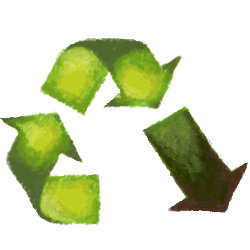 Downcycling is the opposite of upcycling – When you recycle paper it looses quality each time (value decreases).
Downcycling is the opposite of upcycling – When you recycle paper it looses quality each time (value decreases).
Industrial recycling often damages materials such as polymers or paper by shortening their fibres and thereby lessening their desirable qualities.
Reprocessing polyester from plastic drinks bottles to make a fleece lining might seem a good example of recycling a waste material into a higher- value product. A fleece jacket is clearly a more sophisticated product than a water bottle, and also has much greater value and cost as a consumer product. Yet the material is actually being downcycled in this instance. The highest food- grade polyester, used for the bottle, is likely to be contaminated by the recycling process, making it chemically inferior in its second life in the jacket. The polyester in a fleece jacket is therefore of lower quality than that in a water bottle. The value of the material is diminished, rather than enhanced, by the recycling process.
Sources & further reading





